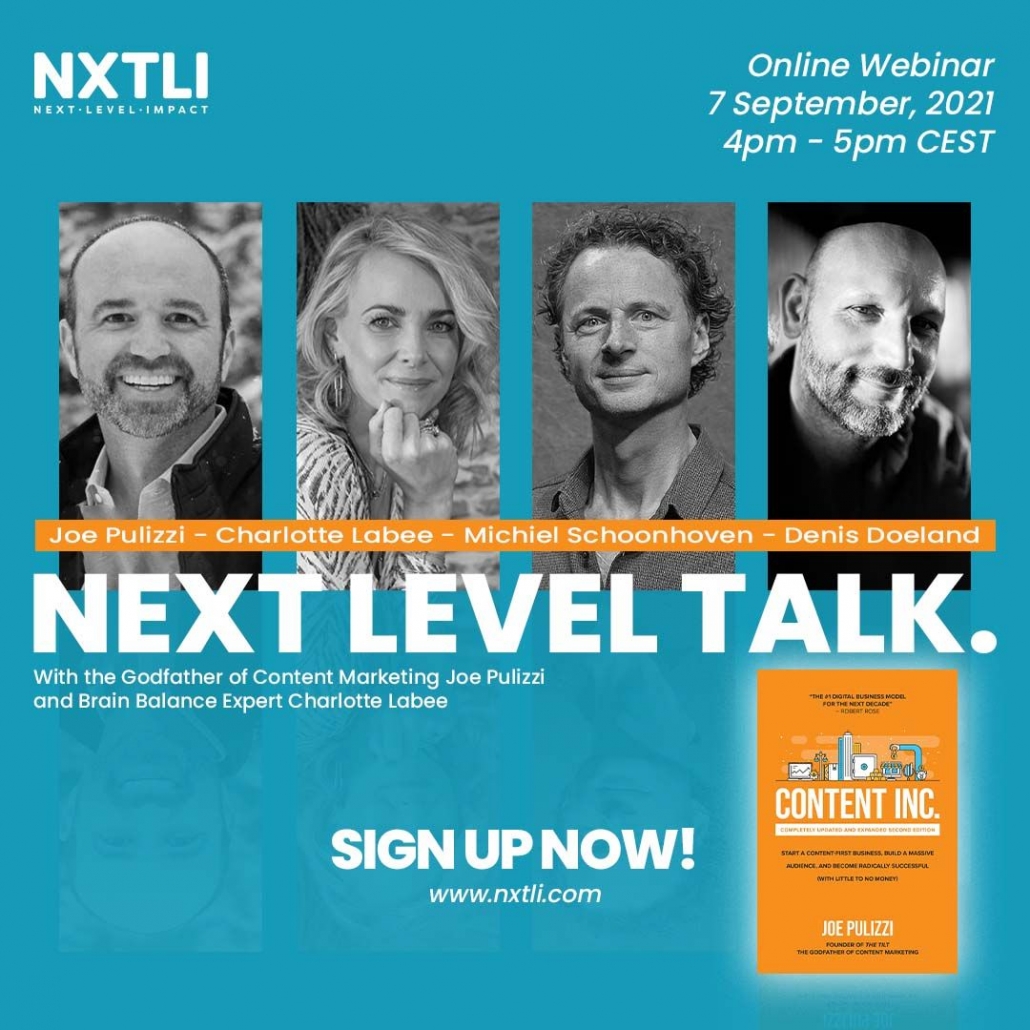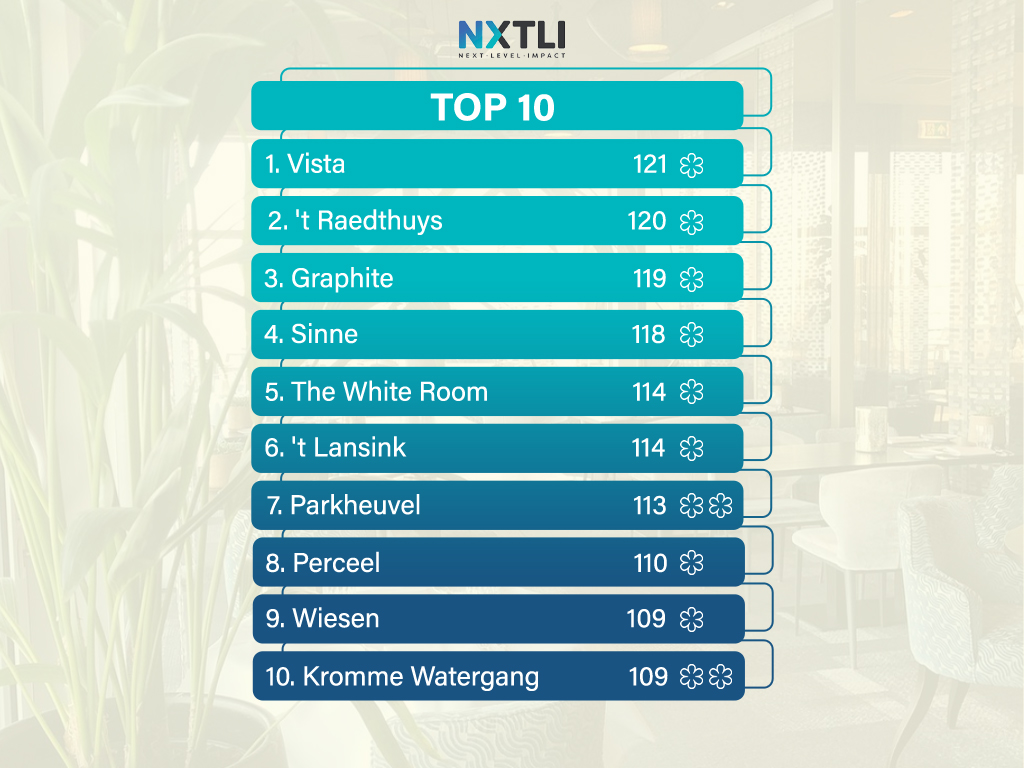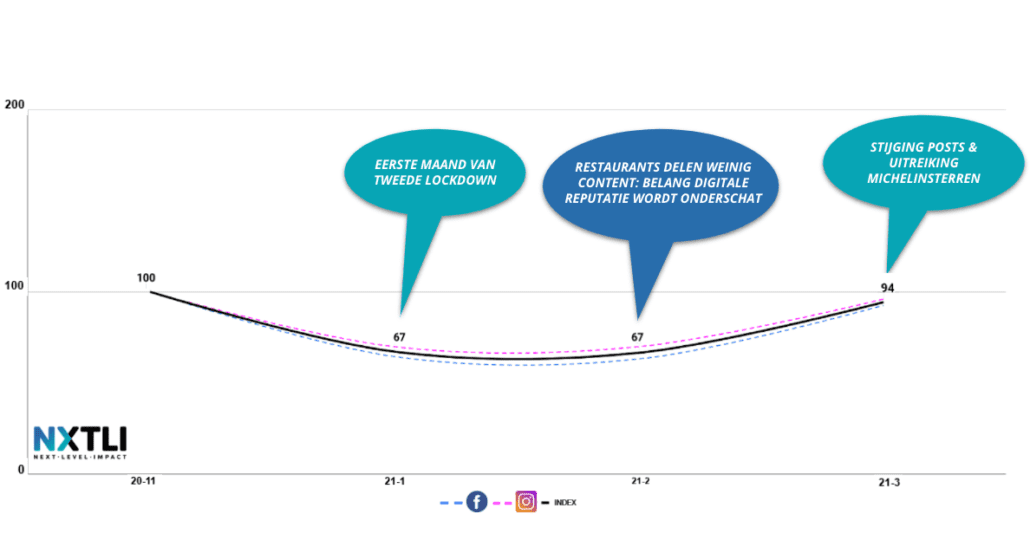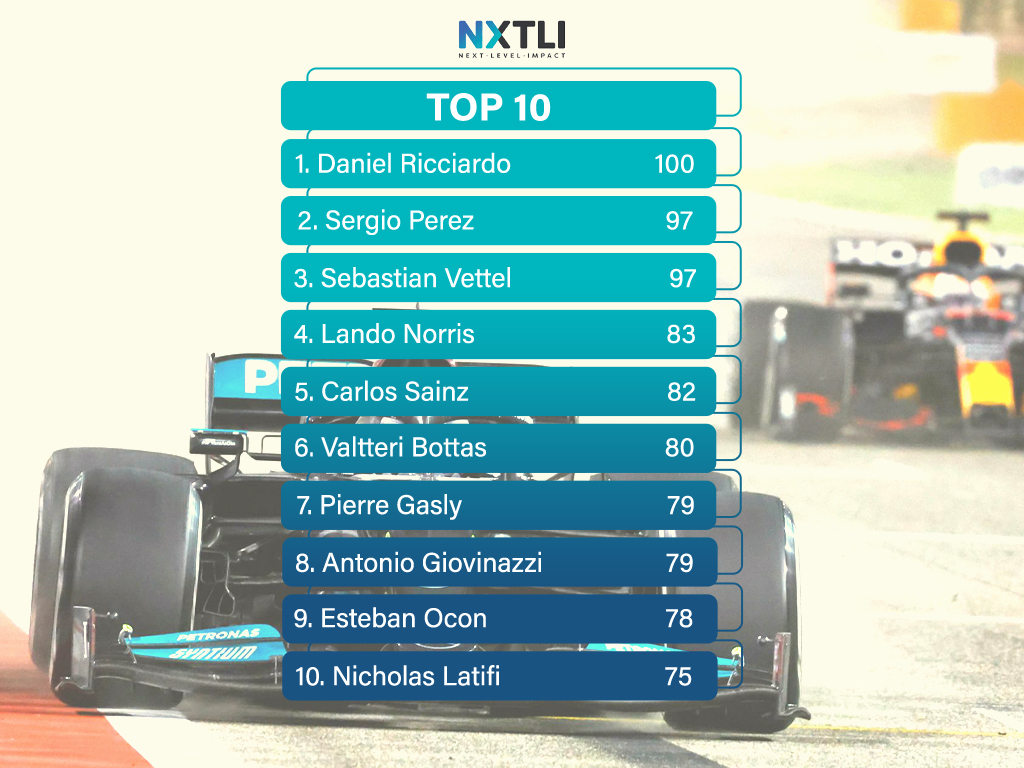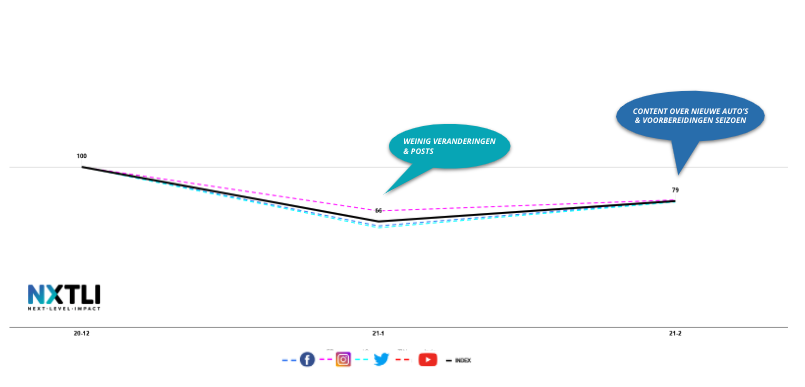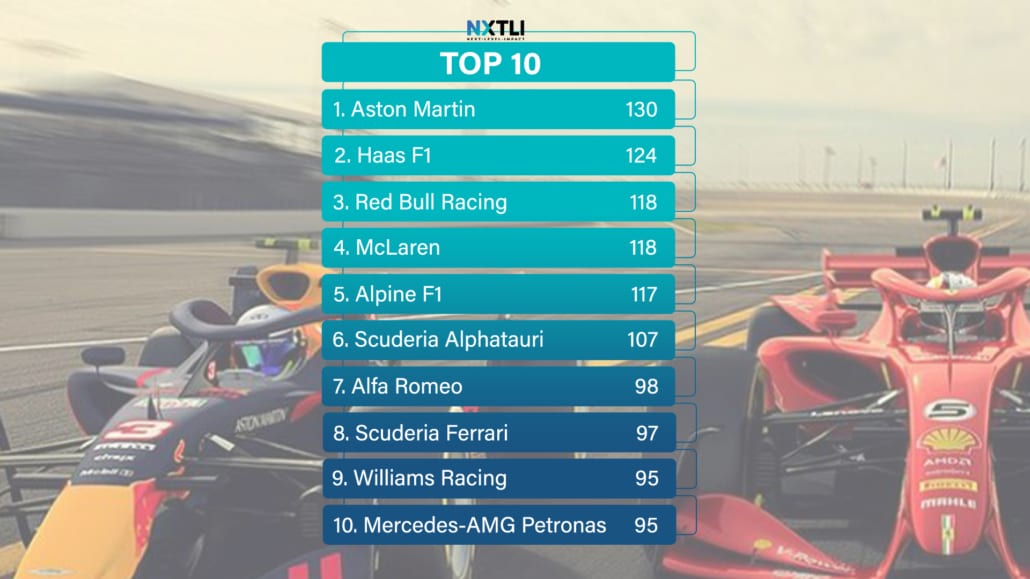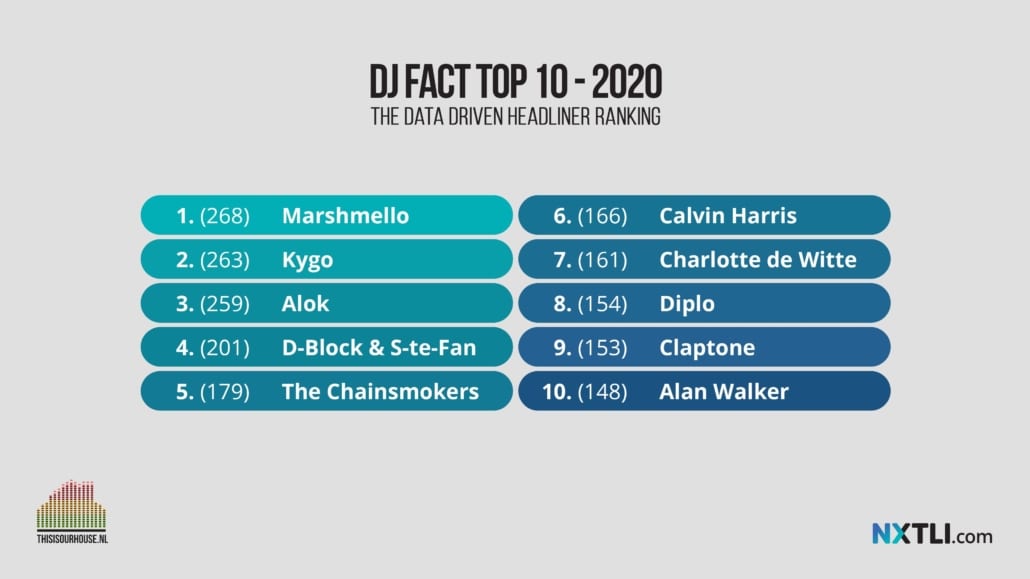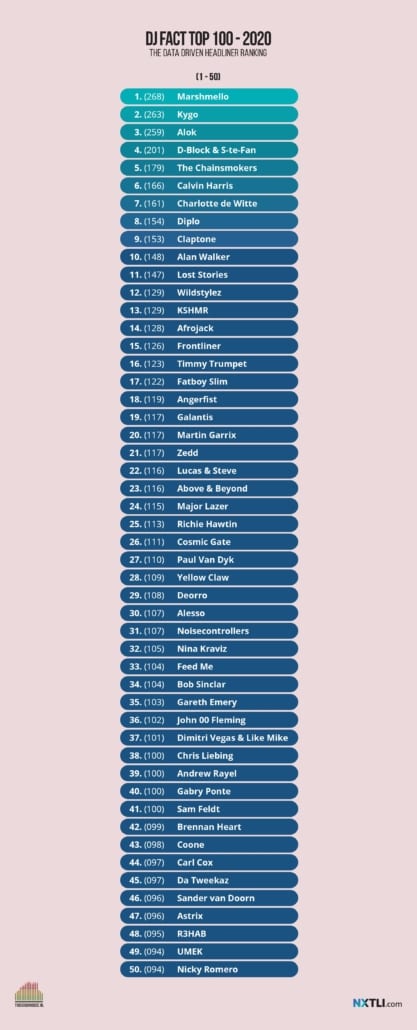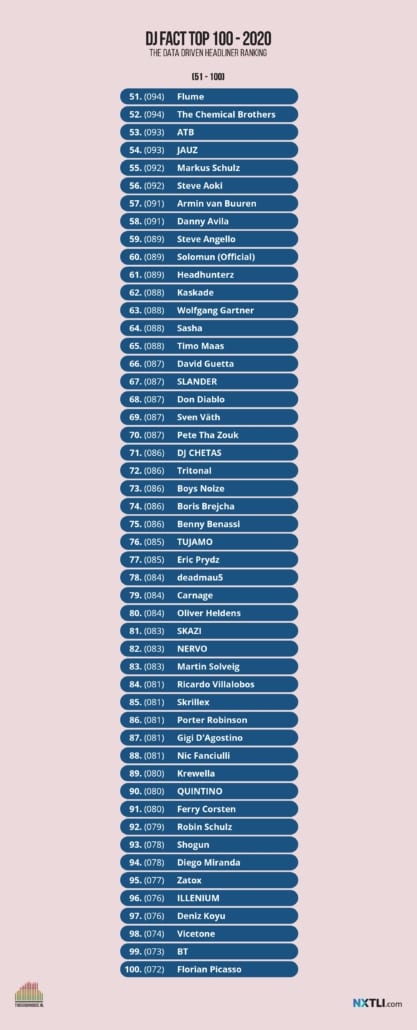What do Bol.com, The Dutch Lottery, Bas Smit and Bavaria have in common? Not only are they successful brands, but above all, their online presence is well organized. Their online reach and fan base grew tremendously by consistently sharing thought-provoking content. With the right insights, anyone can achieve such a successful digital reputation strategy.
9 out of 10 consumers buy a product or service from a company they follow on social media, Sprout researchers found. Moreover, 75 percent spend more money each year on companies they follow. In short: those who want to engage people and achieve higher sales must have their online channel reputation in order during and also after corona. NXTLI has developed its own Reputation Index in recent years. In order to realize a grip on its clients' online channels.
Fan relationship is essential
"The fan relationship has become the most important business capital of companies in the dance industry. Especially during the corona period. The whole organization must be geared to that. Investing in the right insights can improve the fan relationship and multiply value. Especially in the area of content, organizations need to make great strides now. Of course, what applies to the dance industry applies to any industry or sector. If you are not able to build a valuable digital relationship with your audience during the corona period with relevant content, chances are you will lose the competition when this period is over," said business and industry hacker Denis Doeland.
Ognjen Jovanovic in charge of data at NXTLI concurs:
"In our experience, many companies operate blind or do not create the right context when it comes to social media performance and maintaining fan relationships. When this performance does get measured appropriately and measured against competitors, everyone involved gets motivated to make the most of their digital reputation. Nothing fuels the fire better than healthy competition."
Digital Reputation Index offers relief
Those who want to achieve online success follow the principle of "Relevance-Consistency-Discipline. First, you determine what content is relevant to share (Relevance). Next, you determine how often you want to reveal these aspects (Consistency). Finally, the key is to keep it up (Discipline).
Also measure how you are performing on digital channels. Is your channel relevant? Then your fan base is growing and there is a lot of interaction with posts. Whether you are consistent enough is shown by your posting rhythm (the regularity with which you post) and that of your competitors. If your post-rate is consistent, these metrics will be stable or growing over a longer period of time and your engagement is high.
The Reputation Index measures, combines and analyzes the above metrics of your channels and those of the competition. This allows you to see at a glance your digital heartbeat and an industry benchmark. This will give you answers to questions like: which channels are performing well, which not so well and which content works best?
With the Reputation Index, you develop a feel for your industry. You will discover the success factors of the competition: what are they posting on which channels to reach their target audience. And what can you learn from them? These insights give you unprecedented advantages - you might almost call it an unfair advantage.
Social media as a lifeline
Doeland recounts an article in the leading Mixmag. "There was an interesting piece published last year, with the nothing to the imagination title: 'FUCK THE ALGORITHM.' This piece raised the question of whether DJs can have a career if they don't use social media. That question is very relevant now, because artists like Nils Frahm and The Black Madonna decided at the time to distance themselves from social media.
Imagine if you would have made this choice before the corona virus broke out. That basically means you signed your death warrant. The consequences of this choice become grimly visible in the Reputation Index and directly affect the primary revenue model, which is streaming. In the long run, it makes a DJ less attractive to book, because you are likely to have fewer and fewer streams without social media."
In addition, data analyst Jovanovic states, "It's crucial to invest in digital reputation right now, even though in the corona period many businesses' income will come under pressure or shut down completely. Unfortunately, it is almost inevitable that in the hardest hit industries, such as events and hospitality, not everyone is going to survive.
The companies that are best able to maintain their fan relationships (via social media and other channels) during this period will stay on consumers' minds. This puts your company in the best position to get off to a flying start when the world goes off the grid again. You may even discover new, digital revenue models in the meantime to bridge the period."
Do or die
The turnaround currently being brought about by the coronavirus is not unlike the paradigm shift previously brought about by the third and on the heels of the fourth industrial revolution. The new - mostly digital - developments present an organization with a "do or die" choice. If you don't transform to a digital first company, your business or business model is doomed from the start. Even after corona. If you have the opportunity or ambition to keep your business alive during the corona period, then you have only one choice: invest in digital. Indeed, the other choice is to go out of business.
Disillusionment and fatigue are bad advisors and impact the value of your business. To get through the "do or die" wall and survive, you have to make quite a few fundamental adjustments to the business. That requires firm choices. The only certainty is that it is time for change.
Now that every organization is challenged with transformation, it is well and truly "do or die. There is no turning back, no second chance; the path taken must lead to success. Even if the primary revenue model is not working optimally right now. Given the dynamics and unpredictability, accurate planning is unfeasible.
Organizations must bring professionals into the fold, trust them with their professionalism, their commitment to common goals and their intrinsic motivation. The coming months until the spring/summer of 2021 will have to be dominated by digital reputation.
Conclusion
The corona period is very challenging for many companies. But it presents an excellent opportunity to gain an edge over competitors in the digital field. For many companies, the best thing they can do now is to invest in digital reputation. By doing so, they secure the long-term future.
NXTLI has created several industry indices that we will publish soon. Such as the Digital Reputation Index for DJswho have been in the DJ Mag Top 100 for the past 15 years. And an index of more than 400 Dutch festivals. Both indexes use data from 2016. NXTLI is also going to publish a new index every week. Starting with Eredivisie, Formula 1 and all Michelin restaurants in the Netherlands.
Want to know more about digital reputation?
See how the Digital Reputation Index is created.
Want to know what your company's (or your own) digital reputation looks like within that of your competitive landscape? We would be happy to set up your own Digital Reputation Monitor for you as well.

